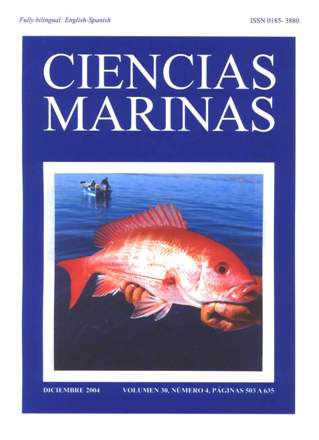Assessment of the Pacific red snapper (Lutjanus peru) fishery in the southwestern Gulf of California
Main Article Content
Abstract
The Pacific red snapper (Lutjanus peru) fishery in the southwestern Gulf of California was analyzed with an age-structured simulation model. In addition to natural mortality (M) and fishing mortality (F), the model incorporates juvenile by-catch mortality (f) caused by the shrimp fishery in the zone. Four simulated scenarios were tested in which different levels of mortality were combined. Contrary to what is established in the National Fishing Charter, simulation outputs showed that the Pacific red snapper fishery cannot be developed if both F and f are kept unregulated as presently occurs. According to the model, the fishery could only be developed with an effective regulation of these mortality sources, which implies control measures for both the artisanal fleet and the shrimp fleet.
Downloads
Article Details

This work is licensed under a Creative Commons Attribution 4.0 International License.
This is an open access article distributed under a Creative Commons Attribution 4.0 License, which allows you to share and adapt the work, as long as you give appropriate credit to the original author(s) and the source, provide a link to the Creative Commons license, and indicate if changes were made. Figures, tables and other elements in the article are included in the article’s CC BY 4.0 license, unless otherwise indicated. The journal title is protected by copyrights and not subject to this license. Full license deed can be viewed here.

